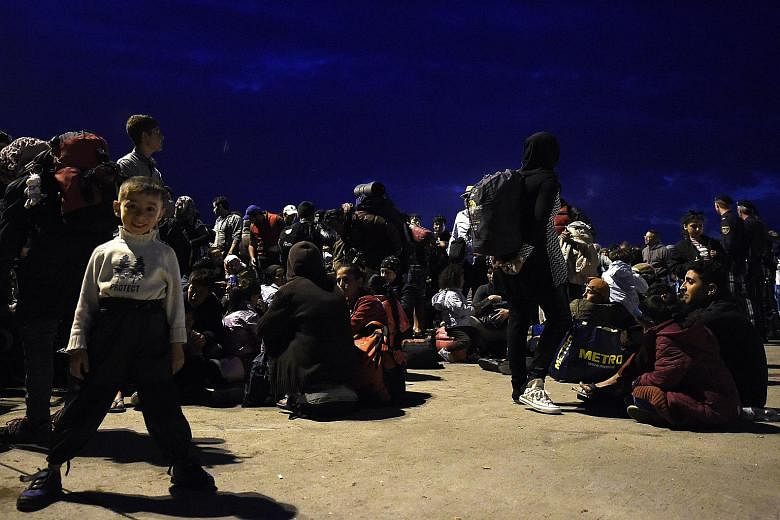BERLIN • Tempelhof Airport was a lifeline for West Berliners isolated from the world during the Berlin Blockade in the Cold War's early days in the late 40s.
Its two runways accommodated a constant stream of Western cargo planes bringing food, coal and other supplies.
Now the iconic former airport will reprise that role, offering refuge in a city adept at adapting to crisis, as hundreds of thousands of asylum seekers pour into Europe, a Berlin official said on Friday.
The task of providing shelter for migrants is especially daunting in Germany's capital. It will receive about 5 per cent of the migrants, a share based on its population and tax revenue.
Faced with the prospect of 40,000 newcomers, Berlin officials have already added portable shipping containers - stacked apartments of corrugated metal that in some cases come complete with shared kitchens and bathrooms. By the end of last month the containers, which can be seen in south-west Berlin, already housed more than 2,000 people.
But Berlin has started seeing about 1,000 new arrivals each day - what it used to receive in a month, said Mr Bernhard Schodrowski, a city spokesman. Many of the migrants are being placed in makeshift tent camps, an option viewed as a last resort.
August's record heat has already given way to a September chill, adding urgency to the need for sturdier shelter.
City officials said on Friday they will go ahead with plans to shelter migrants at Tempelhof, as well as at an old bank. About 500 to 700 migrants will be housed in small structures in one unused hangar of Tempelhof to ensure some privacy, perhaps as soon as this week, Mr Schodrowski said.
Among other obstacles, officials say they will have to figure out how to provide adequate bathroom facilities and insulate the hangars before winter.
It has been seven years since the last flight departed Tempelhof and its seven hangars and sprawling airfield. Built in the late 1930s, Tempelhof was designed to become the largest air terminal of its day. Hitler wanted to make it his "world airport" and its sweeping, semicircular building was built to hold a grandstand that could accommodate 100,000 spectators.
The airport has been used in recent years as office space and a cultural venue.
THE NEW YORK TIMES

